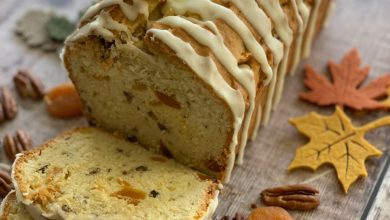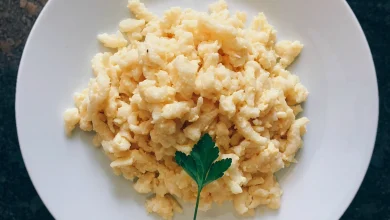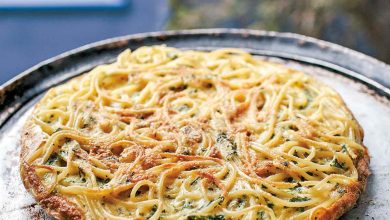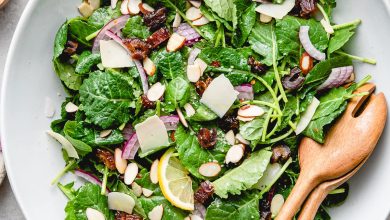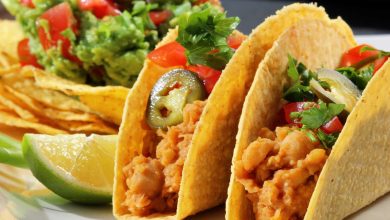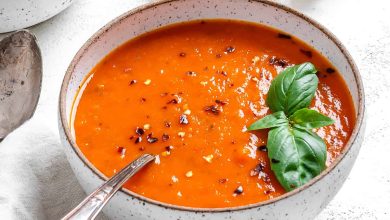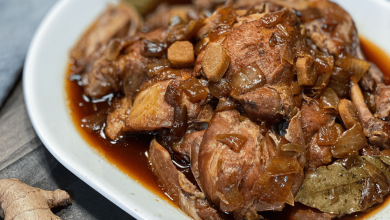Broad Bean Hummus is a delightful and nutritious dip or spread made from cooked broad beans, also known as fava beans. It is a popular dish in Middle Eastern and Mediterranean cuisine, similar to traditional chickpea hummus but with a unique flavor profile.
History:
The exact origin of broad bean hummus is not well-documented, but it likely has roots in Middle Eastern and Mediterranean regions where both broad beans and various legume-based dishes have been part of the cuisine for centuries. Hummus itself is believed to have a long history, with early versions dating back to ancient Egypt and the Levant.
Components:
To make a basic Broad Bean Hummus, you will need the following components:
-
Broad Beans: The main ingredient, which can be fresh or dried broad beans. If using dried beans, they should be soaked and cooked until tender.
-
Tahini: A paste made from sesame seeds, which adds creaminess and depth of flavor to the hummus.
-
Garlic: For a hint of sharpness and a rich flavor, use fresh garlic cloves.
-
Lemon Juice: Freshly squeezed lemon juice provides acidity and brightness to the dish.
-
Olive Oil: High-quality olive oil is drizzled on top for extra flavor and a smooth texture.
-
Seasonings: Common seasonings include ground cumin, salt, and sometimes paprika or ground coriander for added complexity.
Steps to Prepare Broad Bean Hummus:
Here’s a step-by-step guide to preparing Broad Bean Hummus:
Step 1: Prepare the Broad Beans
- If using dried broad beans, soak them in water overnight and then cook until tender. If using fresh beans, blanch them in boiling water until they are soft.
Step 2: Blend the Ingredients
- In a food processor, combine the cooked broad beans, tahini, garlic cloves, lemon juice, ground cumin, and a pinch of salt.
Step 3: Blend Until Smooth
- Process the mixture until it becomes a smooth and creamy paste. If it’s too thick, you can add a bit of water or more lemon juice to achieve the desired consistency.
Step 4: Taste and Adjust
- Taste the hummus and adjust the seasoning as needed. You can add more salt, lemon juice, or cumin to suit your preferences.
Step 5: Serve
- Transfer the Broad Bean Hummus to a serving dish. Create a well in the center and drizzle olive oil over it. You can garnish with a sprinkle of paprika, ground coriander, or fresh herbs.
Time Needed:
The time required to prepare Broad Bean Hummus depends on whether you use fresh or dried broad beans. If using dried beans, soaking and cooking can take several hours, but the actual preparation and blending of the ingredients take about 15-20 minutes. If using fresh beans, the overall preparation time is shorter, around 30-40 minutes, including cooking the beans.
Broad Bean Hummus is a delicious and healthy alternative to traditional chickpea hummus, offering a unique flavor and texture. It can be served as a dip with pita bread, vegetable sticks, or as a spread on sandwiches and wraps. Enjoy experimenting with this delightful dish!
Certainly, here are the nutrition facts and health information for Broad Bean Hummus:
Nutrition Facts (Per 2-Tablespoon Serving):
- Calories: Approximately 40-50 calories
- Protein: About 1-2 grams
- Carbohydrates: Around 4-6 grams
- Dietary Fiber: Roughly 1-2 grams
- Fat: About 2-4 grams
- Saturated Fat: Minimal, less than 1 gram
- Monounsaturated Fat: Mainly from olive oil, which is considered heart-healthy
- Polyunsaturated Fat: Minimal
- Cholesterol: None (plant-based)
- Sodium: Low, typically less than 100 milligrams
- Potassium: Provides a small amount of potassium
- Vitamins: Contains vitamins such as vitamin C (from lemon juice), and B vitamins
- Minerals: Contains minerals like iron, magnesium, and phosphorus
- Folate: A good source of folate due to the broad beans
- Protein: A decent source of plant-based protein
Health Information:
Broad Bean Hummus is a nutritious and health-conscious choice for several reasons:
-
Rich in Plant-Based Protein: Broad beans are a good source of plant-based protein, making this hummus a suitable option for vegetarians and vegans.
-
Healthy Fats: Olive oil used in hummus is high in monounsaturated fats, which are considered heart-healthy and can help reduce the risk of heart disease.
-
Low in Saturated Fat: This hummus recipe is low in saturated fats, making it a heart-healthy choice.
-
Fiber Content: The dietary fiber in hummus helps with digestion and can contribute to a feeling of fullness, aiding in weight management.
-
Micronutrients: Broad beans provide essential vitamins and minerals, including folate, which is crucial for various bodily functions.
-
Low in Sodium: Homemade hummus allows you to control the amount of salt added, making it a suitable choice for those watching their sodium intake.
-
Versatile and Balanced: Hummus can be a part of a balanced diet, serving as a dip for vegetables, a spread on sandwiches, or a topping for salads.
Remember that the exact nutritional content may vary based on specific ingredients and preparation methods. However, Broad Bean Hummus is generally a nutritious and wholesome option, especially when consumed in moderation as part of a well-balanced diet.


